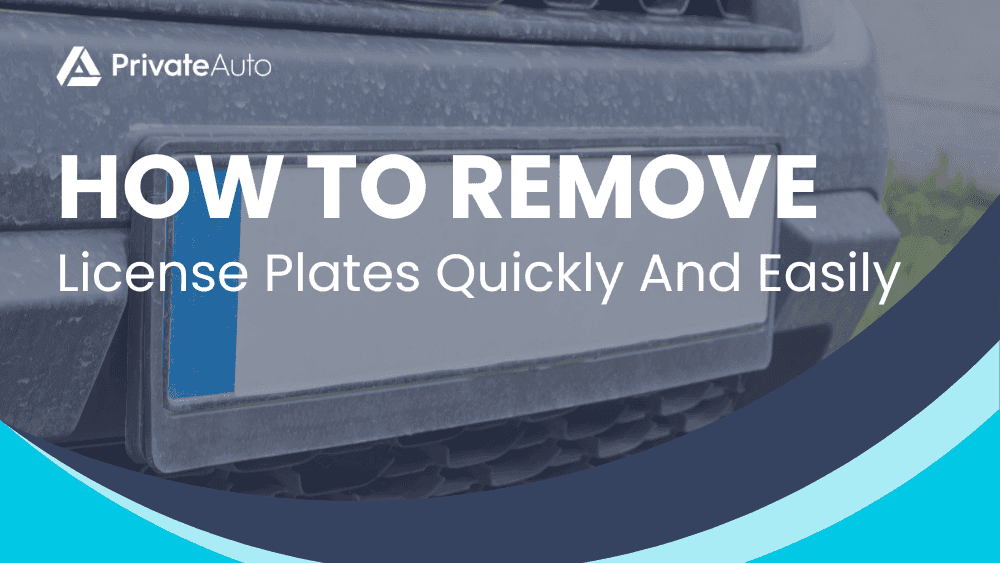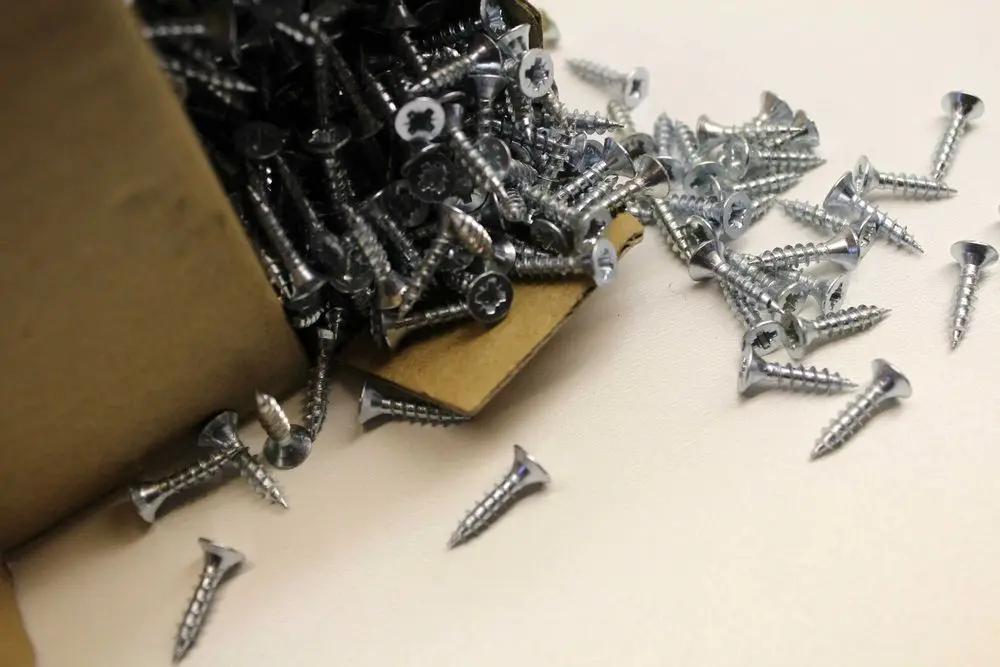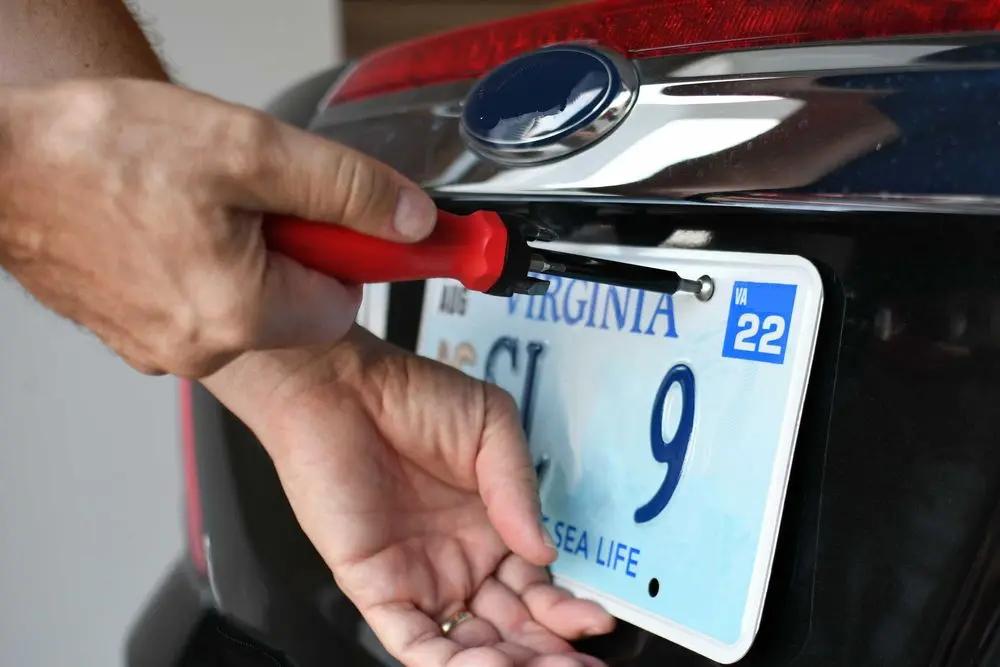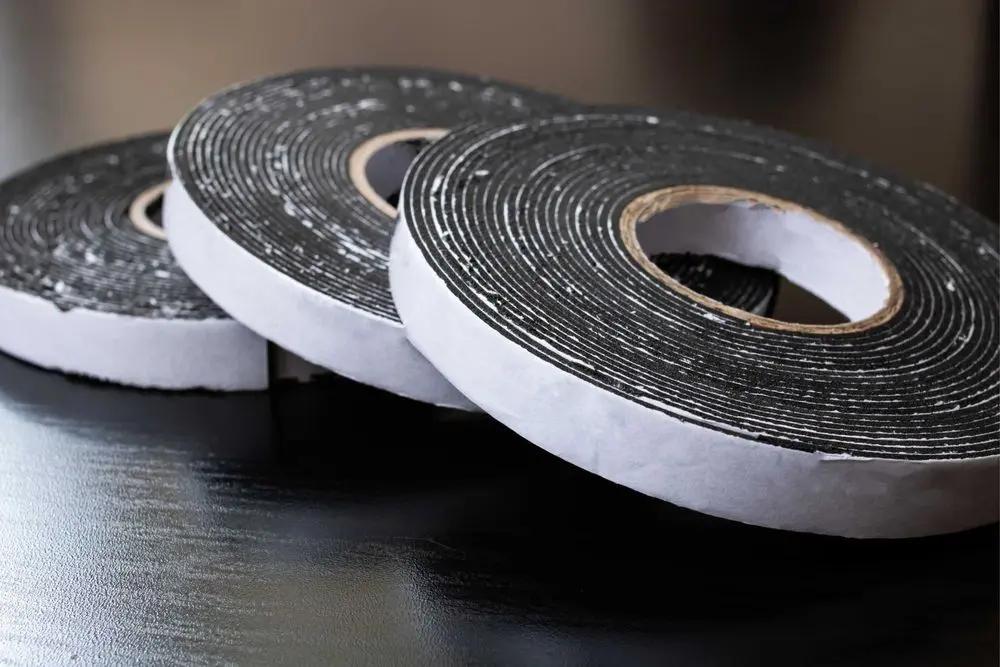How To Remove License Plates Quickly And Easily
Removing license plates should be simple, right? Depending on how your plates are attached, the process can sometimes be surprisingly stubborn. Here’s how to get those license plates off your car.
Removing license plates should be simple, right? Depending on how your plates are attached, the process can sometimes be surprisingly stubborn. Here’s how to get those license plates off your car.
Whether you're transferring plates to a new vehicle or taking them off for some other reason, the process is relatively simple. With a few basic tools, you can have your plates removed in no time.
Whether you're transferring plates to a new vehicle or taking them off for some other reason, the process is relatively simple. With a few basic tools, you can have your plates removed in no time.
Reasons for Removing License Plates
Here are two most common reasons you may be needing to take off the license plates from your vehicle:
1. If you are selling your vehicle, many states require you to remove the plates before signing over the title and letting the buyer drive off with the car.
2. If you move to a new state, you will need to get new license plates for your car—which means taking off the old ones.
1. If you are selling your vehicle, many states require you to remove the plates before signing over the title and letting the buyer drive off with the car.
2. If you move to a new state, you will need to get new license plates for your car—which means taking off the old ones.
Before You Try To Remove Your License Plate
License plates, sometimes called number plates, are required to be displayed on the back of a vehicle. Some US states require a license plate on the front of a vehicle as well. In most cases, plates are made of metal or plastic and attached to the vehicle with screws, bolts, or adhesive.
If you need to remove your license plate for any reason, it is important to know how it is attached so that you can avoid damaging the plate or the vehicle.
If you need to remove your license plate for any reason, it is important to know how it is attached so that you can avoid damaging the plate or the vehicle.
How Are License Plates Attached?
The method of attaching license plates to vehicles has changed over the years, but the most common methods are still screw-fixing adhesive and bracketry.
Early license plates were simply screwed onto the vehicle bodywork, often with large, decorative screws. These days, smaller tamper-proof screws are used for a more secure fix.
Early license plates were simply screwed onto the vehicle bodywork, often with large, decorative screws. These days, smaller tamper-proof screws are used for a more secure fix.
Sticky Pads
Sticky pads are small discs of adhesive that are applied to the back of the plate. The plate is then pressed firmly into place on the car. This method is quick and easy, and it ensures that the plate will stay in place even when driving at high speeds. However, it is important to make sure that the pads are replaced regularly, as they can lose their stickiness over time.
Screws
The most common method to attach license plates to a car is to use screws. In order to prevent the screws from coming loose, it is important to use the proper type and size for the job.
License plate screws are typically made of stainless steel or copper, and they have a small head to ensure a flush fit. In addition, the screw holes in the license plate should be slightly larger than the screws themselves. This ensures that the screws will not strip the threads when they are tightened.
License plate screws are typically made of stainless steel or copper, and they have a small head to ensure a flush fit. In addition, the screw holes in the license plate should be slightly larger than the screws themselves. This ensures that the screws will not strip the threads when they are tightened.
Tamper Proof Screws
Most license plates are attached to vehicles using four small screws. Two of the screws go through the top of the plate, while the other two are inserted through the bottom.
In order to prevent theft, these screws are often made out of tamper-proof material such as steel or aluminum. In some cases, the screws may also be coated with a special resin that makes them more difficult to remove.
Once the screws are in place, they are typically covered with a small metal cap or plastic plug. This helps to protect the screw threads from damage and makes it more difficult for would-be thieves to remove the plates. As a result, license plates usually stay securely attached even during busy highway driving or severe weather conditions.
In order to prevent theft, these screws are often made out of tamper-proof material such as steel or aluminum. In some cases, the screws may also be coated with a special resin that makes them more difficult to remove.
Once the screws are in place, they are typically covered with a small metal cap or plastic plug. This helps to protect the screw threads from damage and makes it more difficult for would-be thieves to remove the plates. As a result, license plates usually stay securely attached even during busy highway driving or severe weather conditions.
Other License Plate Fixing Methods
License plates are typically attached to vehicles using two-bracket systems. The first system consists of two screws that are placed through the front of the plate and into the bumper. The second system uses two bolts that are placed through the back of the plate and into the trunk or rear door. In some states, license plates must be illuminated, which requires an additional wire to be attached to the plate. In most cases, license plates can be removed without damaging the vehicle. However, if a plate is removed without using the proper tools, it can damage the paint or finish on the bumper or trunk.
License Plate Brackets
License plates can be attached to a vehicle using license plate brackets. The brackets are usually made of metal and are attached to the front and back of the vehicle. The license plate is then placed on top of the bracket and secured with screws or bolts. In some cases, adhesive strips may be used instead of screws or bolts.
License plate brackets are available in a variety of sizes and styles to fit different types of vehicles. Some states have regulations regarding the size, shape, and material of license plate brackets. However, in most cases, license plate brackets can be easily purchased at a local auto parts store.
Surrounds, Or Lipped Brackets
Most modern license plates are affixed to vehicles using metal brackets that are crimped or riveted onto the plate. These brackets, known as surrounds or lipped brackets, have a lip that extends around the edge of the plate and presses against the vehicle's surface. This lip helps to keep the plate in place, even if the screws or rivets that hold the bracket in place become loose. While this type of attachment is very secure, it can be difficult to remove a plate that is attached in this way.
License Plate Brackets
License plates can be attached to a vehicle using license plate brackets. The brackets are usually made of metal and are attached to the front and back of the vehicle. The license plate is then placed on top of the bracket and secured with screws or bolts. In some cases, adhesive strips may be used instead of screws or bolts.
License plate brackets are available in a variety of sizes and styles to fit different types of vehicles. Some states have regulations regarding the size, shape, and material of license plate brackets. However, in most cases, license plate brackets can be easily purchased at a local auto parts store.
Surrounds, Or Lipped Brackets
Most modern license plates are affixed to vehicles using metal brackets that are crimped or riveted onto the plate. These brackets, known as surrounds or lipped brackets, have a lip that extends around the edge of the plate and presses against the vehicle's surface. This lip helps to keep the plate in place, even if the screws or rivets that hold the bracket in place become loose. While this type of attachment is very secure, it can be difficult to remove a plate that is attached in this way.
Choose The Right License Plate Removal Tool
Before you can remove your license plate, you need to find the right tool for the job. There are a few different types of license plate removal tools on the market, so it's important to choose one that will work best for your particular vehicle. If you're not sure which tool to use, consult your owner's manual or ask a professional at your local auto parts store. Once you have the right tool, simply follow the instructions that came with it to remove your license plate.
If you have a standard metal license plate, you can use a flathead screwdriver or a putty knife to remove the plates. However, if you have a plastic or composite license plate, you will need to use a plate removal tool that is specifically designed for those materials.
If you have a standard metal license plate, you can use a flathead screwdriver or a putty knife to remove the plates. However, if you have a plastic or composite license plate, you will need to use a plate removal tool that is specifically designed for those materials.
How To Remove A License Plate
Removing a license plate is a quick task that every driver needs to know how to do. With one simple tool, you will be able to remove your vehicle’s old license plate and install a new one in only a few minutes. Here is a brief guide to removing your license plates, depending on how they were fixed onto your vehicle:
How To Remove License Plate Screws
Removing screws from a license plate can be a tricky task, but there are a few things you can do to make it easier.
Is it Best to Remove a License Plate When Selling A Car?
Different states have different requirements for what happens with the license plates following a private vehicle sale.
Our state-by-state license plate guide will tell you the proper protocol for your state.
Some states require that you surrender your license plate when you sell your car. So be sure to check your state's requirements before you finalize the sale.
•
In most states, the license plate stays with the seller, who will need to remove the plate from the vehicle. The new vehicle owners of the car will need to apply for their own license plate.
•
In a few states, the license plate stays with the vehicle and passes to the buyer.
Some states require that you surrender your license plate when you sell your car. So be sure to check your state's requirements before you finalize the sale.
Steps for Selling Your Vehicle through PrivateAuto
Steps for Selling Your Vehicle through PrivateAuto
PrivateAuto makes selling your used vehicle easy. The sales process consists of a few simple steps:
Gather necessary documentation
You’ll need your vehicle title and registration, and other paperwork discussed above. Have it handy, so you’re not scrambling to find it at the moment of completing a sale.
Register your vehicle on PrivateAuto and get verified
To make PrivateAuto a safe place for everyone, we require email, phone, and driver’s license verification, including facial recognition. Get started here.
List your car
Easily create your PrivateAuto listing with our step-by-step guide. Bonus: we include a window brochure with a QR code scannable to your listing.
Set your terms
It’s your car, so you drive the deal! You can control where, when, and who you meet. Decide whether to accept only ID-verified buyers, or buyers with verified funds. Don’t waste your time with buyers who aren’t verified to your preference.
Vet incoming offers
Manage offers in one place with the ability to accept, reject, or counter offers within the app. Listing on multiple sites? Filter all communications through PrivateAuto by sharing your listing link on all platforms. Your personal info is protected: no more giving out your phone number or email address. All communication happens in our app.
Choose a buyer
When you find an offer you like, accept it and proceed to the next step with that buyer.
Schedule a test drive
The buyer will want to test drive your car. No more back and forth texts. You never have to give out your phone number. Rather, use our handy scheduling feature to coordinate a time and place for a test drive. (Oh, and you’ll be able to finalize the transaction instantly at the test drive location, FYI.)
E-sign documents
After the buyer is satisfied with your car and the two of you have agreed on a purchase price, you can easily e-sign the Bill of Sale within our app, from your phone. With our shared documents feature, you can easily locate the vehicle paperwork needed after the sale.
Get paid, instantly
Before PrivateAuto, receiving funds was the most stressful part of the entire selling process, especially for any used car sale over $5,000. There just aren’t a lot of good ways to move large amounts of money quickly and conveniently. Those days are over! Verify and receive funds instantaneously with PrivateAuto Pay, our innovative banking integration. Guaranteed funds for transactions large and small.
Transfer title
When you sell your vehicle, fill out the necessary information on the back of the title transfer document to transfer the title to the buyer.
License plates
In some states, you’ll remove your license plates, while in other states you’ll leave them on and let the buyer take them with the car.
Cancel car insurance
You don’t want to pay for insurance on a car you no longer own, so be sure to cancel your vehicle's insurance.
The buyer will need to get new vehicle registration and may be required to pay sales tax, excise taxes, or other fees, depending on the state.
The buyer will need to get new vehicle registration and may be required to pay sales tax, excise taxes, or other fees, depending on the state.
License Plates FAQ
How do I remove a license plate with a bumper?
Most license plates are held onto the bumper cover with four plastic rivets. In order to remove the plate, you will need to first remove these rivets. This can be done with a screwdriver or a drill. Once the rivets are removed, the plate will come off easily. If there is any adhesive residue left behind, it can be removed with a putty knife or a wire brush. After the plate is removed, you should be able to see four holes in the bumper cover. These holes will need to be filled in before you can install a new license plate.





